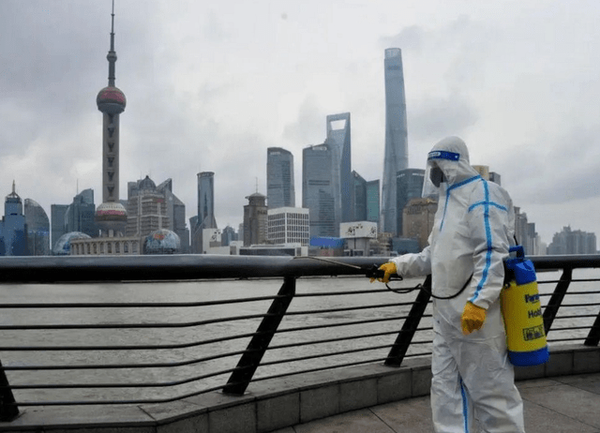On March 27, Shanghai went into the largest city-wide lockdown in history. 25 million residents were forced to stay home as the government adhered to a strict zero-COVID strategy. The Chinese government enforced border controls, mass testing, quarantines and stringent lockdowns to stamp out further transmission after the city recorded over 5,000 cases in March 2022, far past the number of cases during the onset of the pandemic in 2020.

With the lockdown continuing for months, many residents have complained about food shortages, lack of medical access, dire conditions at makeshift quarantine camps, and inhumane measures such as authorities separating infected children from their parents. Public rage peaked toward the end of April when a video called "Voices of April" documenting residents’ experiences of the authorities’ failures went viral on the internet. The six-minute video showed the city’s skyline with voice recordings of residents demanding the government to provide basic necessities, a son begging for his sick father to be admitted to a hospital, and an official explaining to a frustrated caller that there was nothing he could do. Soon, censorship stepped in, and the video was taken down as well as any reference to it in the media.
“We are not killed by COVID, but by the COVID control measures,” noted one popular comment on Weibo, a popular Chinese social media platform. A nurse who suffered an asthma attack died after being denied care because of control measures. A 90-year-old man died of complications from diabetes after being turned away from an overwhelmed hospital. According to an estimate by a prominent Chinese physician, nearly 1,000 diabetes patients, as compared to the 5,000 official COVID death toll during two and half years of pandemic, could die during Shanghai’s lockdown.
Since April 17, Shanghai city officials have reported 238 COVID-related deaths, but many cast doubt on the reliability of the figure as the trend seems to fall outside the medical norms. China classifies COVID deaths much more narrowly than many other countries, labeling some COVID patients with preexisting conditions as victims of those other conditions rather than COVID. The Chinese government also does not release any information on excess deaths, defined as the number of deaths exceeding the expected total in a given period — from COVID as well as other causes. Public health scholars claim that excess death can more accurately capture losses during the pandemic, as definitions for COVID-related deaths differ. But with limited data available, it is hard to evaluate the true impact of COVID on public health in China.
In contrast, the mounting economic and social costs of the prolonged lockdown in Shanghai are quite evident. Economists estimate that the lockdown could reduce the overall Chinese GDP by 4% in a conservative estimate. While most other countries are shifting their policy towards endemic, China is going in a reverse direction with its unwavering commitment to zero-COVID strategy. Chinese leader Xi Jinping said at a global summit: “No effort should be spared to attend every case, save every patient, and truly respect the value and dignity of every human life.” However, the sustainability of that policy is under question, as highly infectious new variants continue to spread throughout the population despite strict measures.
Towards the end of April, the government announced that some neighborhoods will be allowed to ease lockdown measures if they do not have reported cases within the past two weeks. However, it is a tenuous freedom, as the lockdown will be reimposed if even one local case is detected. More than 5 million residents in Shanghai still remain in strict lockdown, and there is no sign of life going back to normal. Meanwhile, authorities in Beijing have announced mass testing, and many lockdown-scarred residents of Shanghai warned the people at the capital to stock up their fridge and prepare for a lockdown.
The Chinese government is now between a rock and a hard place. It can swallow its national pride and start mass vaccination using foreign mRNA vaccines to revitalize its economy and society, or continue its strict zero-COVID policy that is imposing enormous economic, social, and political toll.

